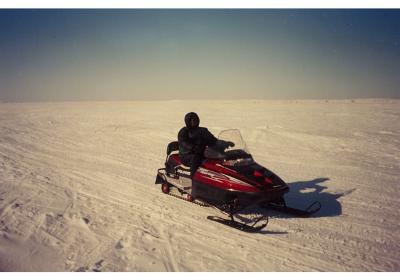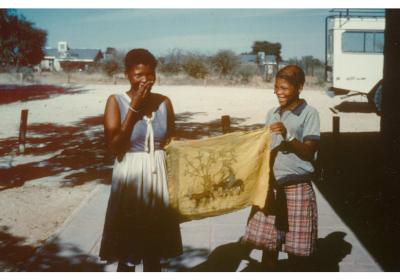Indigenous communities in the Arctic Region of Canada
Indigenous community in Botswana
From 1988 -1994, I was involved in implementing series of socio-economic projects to support the ethnic groups including the Busmen and girls in the town of Kang Botswana. Some of These projects included Tanning, and Tree Planting, bread making, roof- thatching.

Techiman Market women
Can you suggest some of the important tools that helped you to function effectively when working with indigenous groups?
Ameyaw answer.
I will try to develop in point form a list of ideas and tools to help future development planners working in indigenous environments.
- Planners must be prepared to represent the interests of the disadvantaged groups while understanding the contributions these groups bring to the community.
- Planners must plan with and to address the common needs of concerned people, especially the disadvantaged group.
- The planner must work towards participatory process that recognizes values, belief and aspirations of f indigenous people and involve them in decisions that affect their lives.
- Planners should see their roles as facilitators or educators. They should continually examine issues, address their significance, and facilitate participation in the design first, implementation and evaluation. Planners objectives must be to develop a process of questioning assumptions, shaping responses and clarifying possibilities. In this way, planners can facilitate the learning process and enable the individual, women and indigenous groups to grow in self- esteem and in the ability to cope with realities.
- When people say this is “we completed Ameyaw’s project” that is bad news because the people have not been involved in first, in the design, implementation and evaluation of the project so they don’t own it, but when the people say “we have completed our project”. That meant they were involved with the project from the beginning to the end. These are the outcomes development planners want to achieve.
Question: Can the development planning perspectives or approach be used to solve development problems and issues in urban environments other than indigenous communities?
Ameyaw answer:
Some of the issues and problems in the urban setting include, land claims. demolition of traditional homes and building new ones, road construction, locating public /private projects on family or individual lands. In all these cases planners, must see their roles as facilitator and educator. They must work towards, bringing all the parties involved for example, the traditional leaders, the clan members, the lawyers, the banks or the financiers together to sort the issues out. Planners must examine all the issues surrounding how to get family members agree to demolish the traditional homes and replace them with new storey buildings. Planners objectives must be to develop a process of questioning assumptions, shaping responses and clarifying possibilities to all the parties involved. Yes, in this way the development planning perspectives or approach can be used to facilitate the learning process and enable the clan members, leaders, bankers, government staff and financiers to make sound decisions and be able to cope with realities of traditional homes giving way to new story buildings along the streets of Techiman and also in the inner city.
Question: Is that the same approach that you used to create the KIIT institution?
Yes, when I was writing my PhD thesis, I knew of many changes that would confront development policies in Africa in the future. One of them would be information and communication technologies {ICTS}. In 2012, I was lucky to meet with the president of Sunyani Polytechnic now called Sunyani Technical University. Together we discuss the possibility of setting up computer colleges in Techiman. We took about three months to questioning assumptions, shaping responses and clarifying possibilities for the computer college to become a viable institution. In 2018 I met the new chancellor at Sunyani Technical University and again we examined the trend of fashion design in Ghana and that led to the launching of fashion design school at KIIT in Techiman. As development planner and founder of KIIT, I see my role as a facilitator and educator. I continually examine the type of programs that would be beneficial to Ghana’s job market and attract students to come learn skills for work and life.
Stephen holds a PhD, in Regional Planning and Resource Development from the University of Waterloo in Ontario, Canada, and since that time he has been involved in many projects around the world. Here are some of other degrees.
The Sir Wilfred Laurier University where he obtained BA degree in political science
The University of Waterloo where he obtained his M.A. degree in political science
The University of Guelph where he obtained his M.A degree in Rural planning and development
For more information on Dr. Stephen Ameyaw
Contact Charity Kyeremmaah
Email: This email address is being protected from spambots. You need JavaScript enabled to view it.
Cell: 0248656179, 0201418104
















